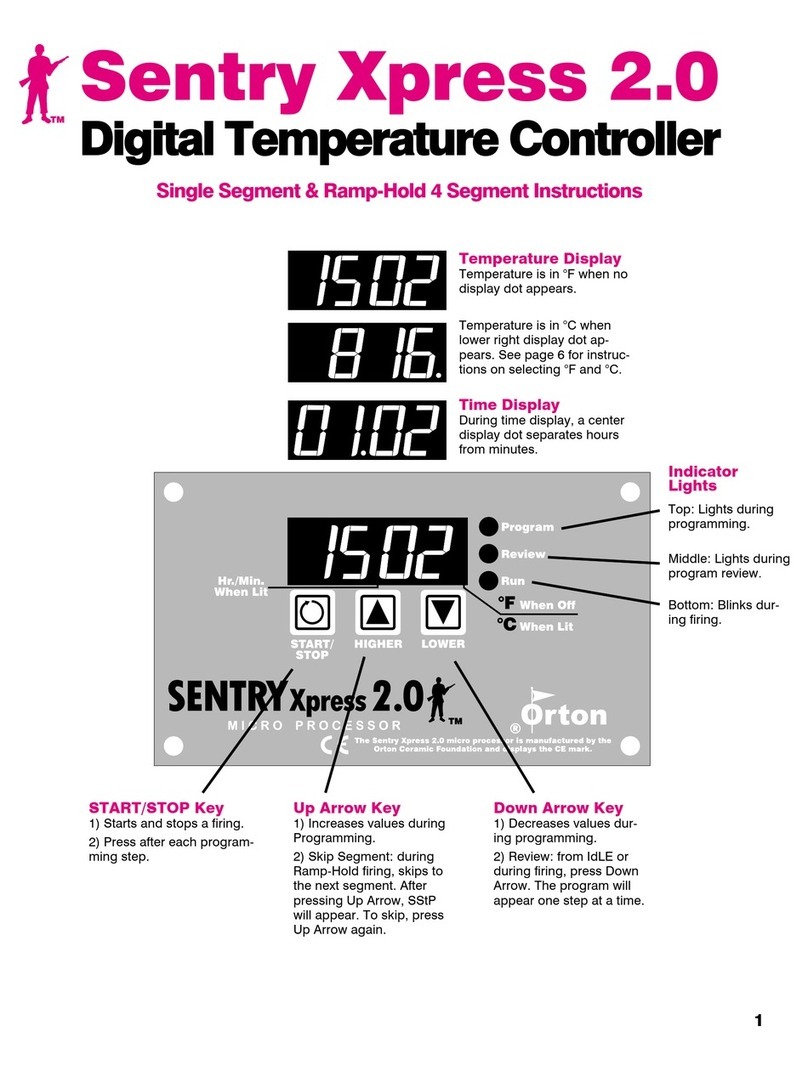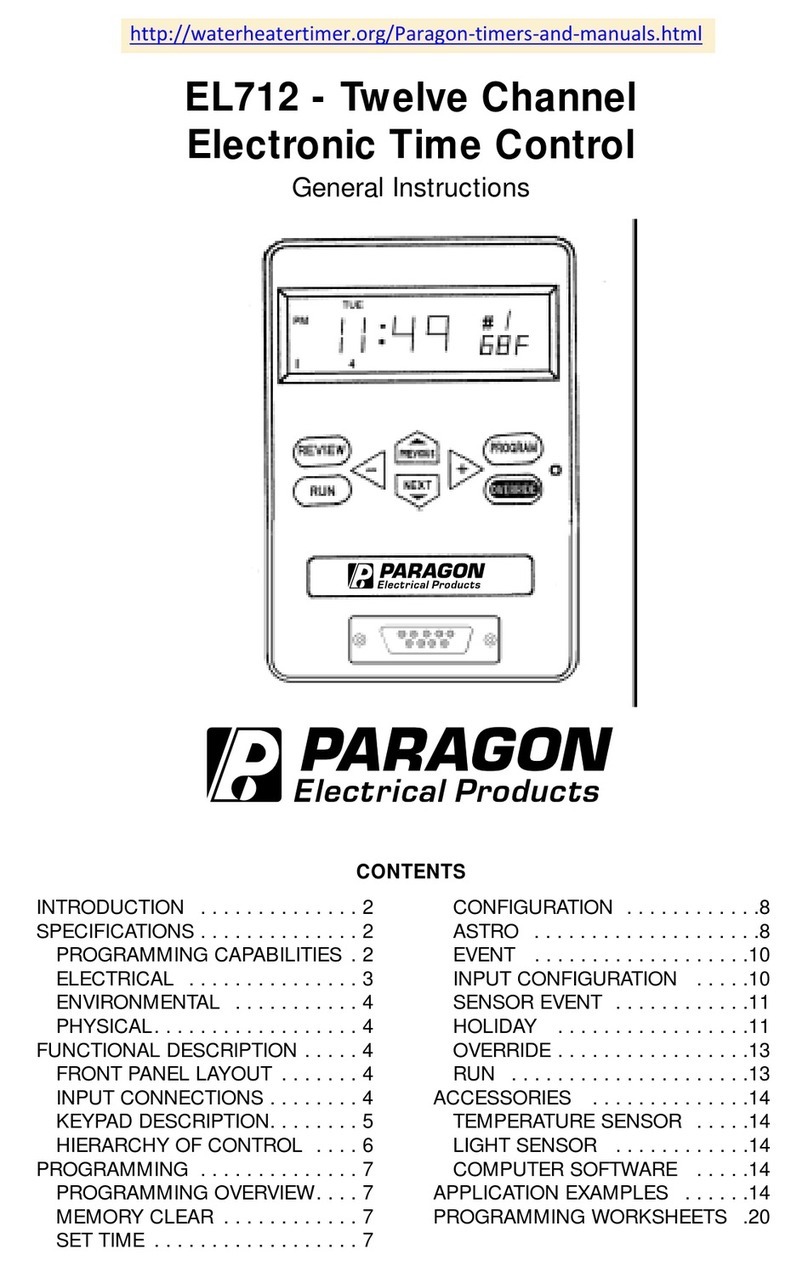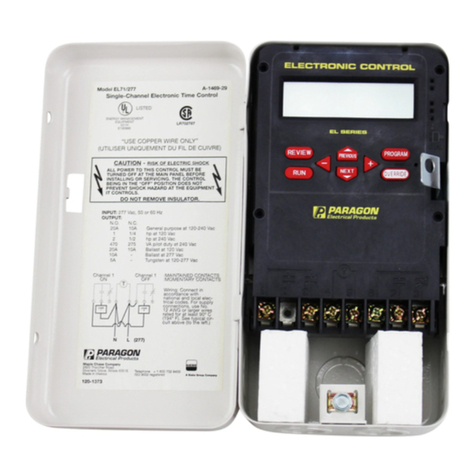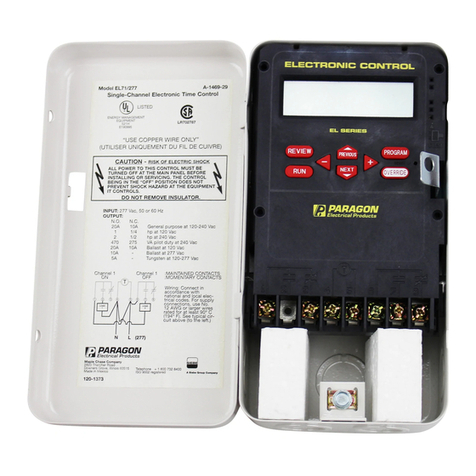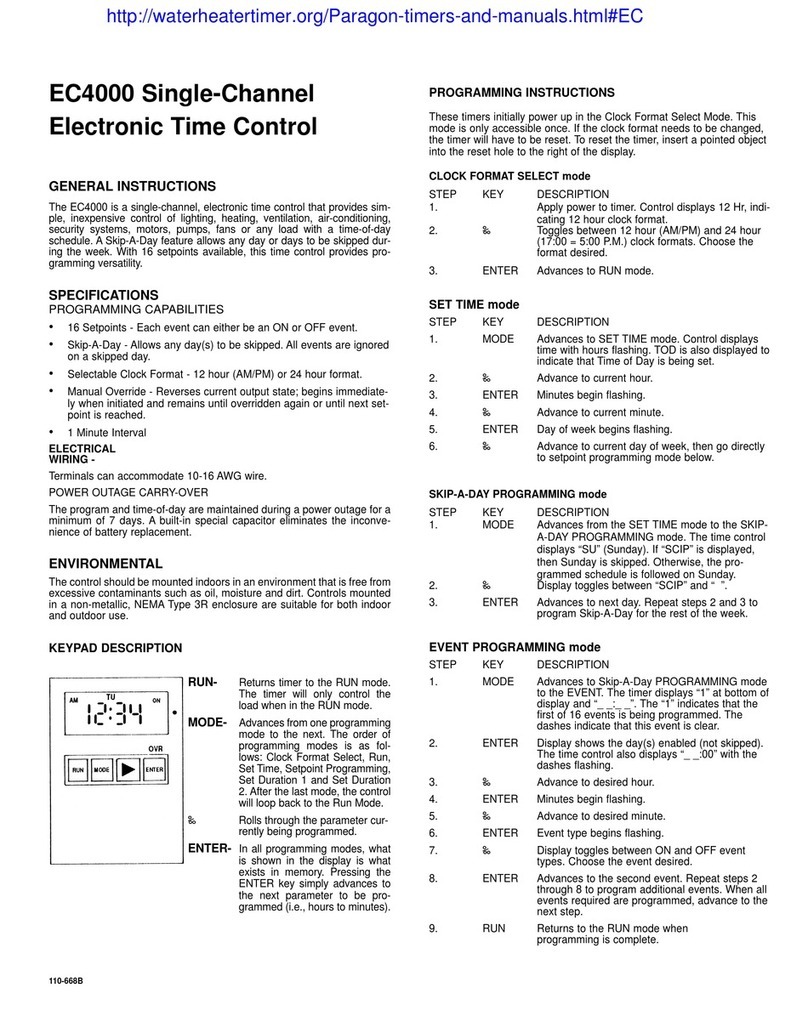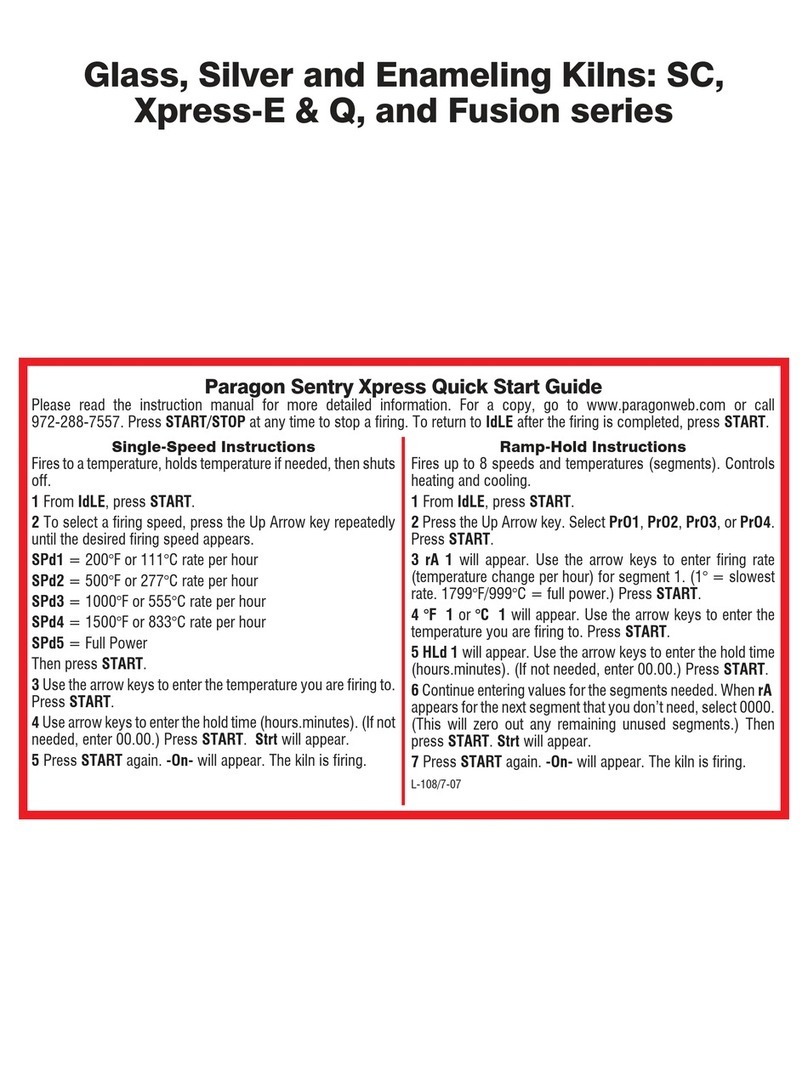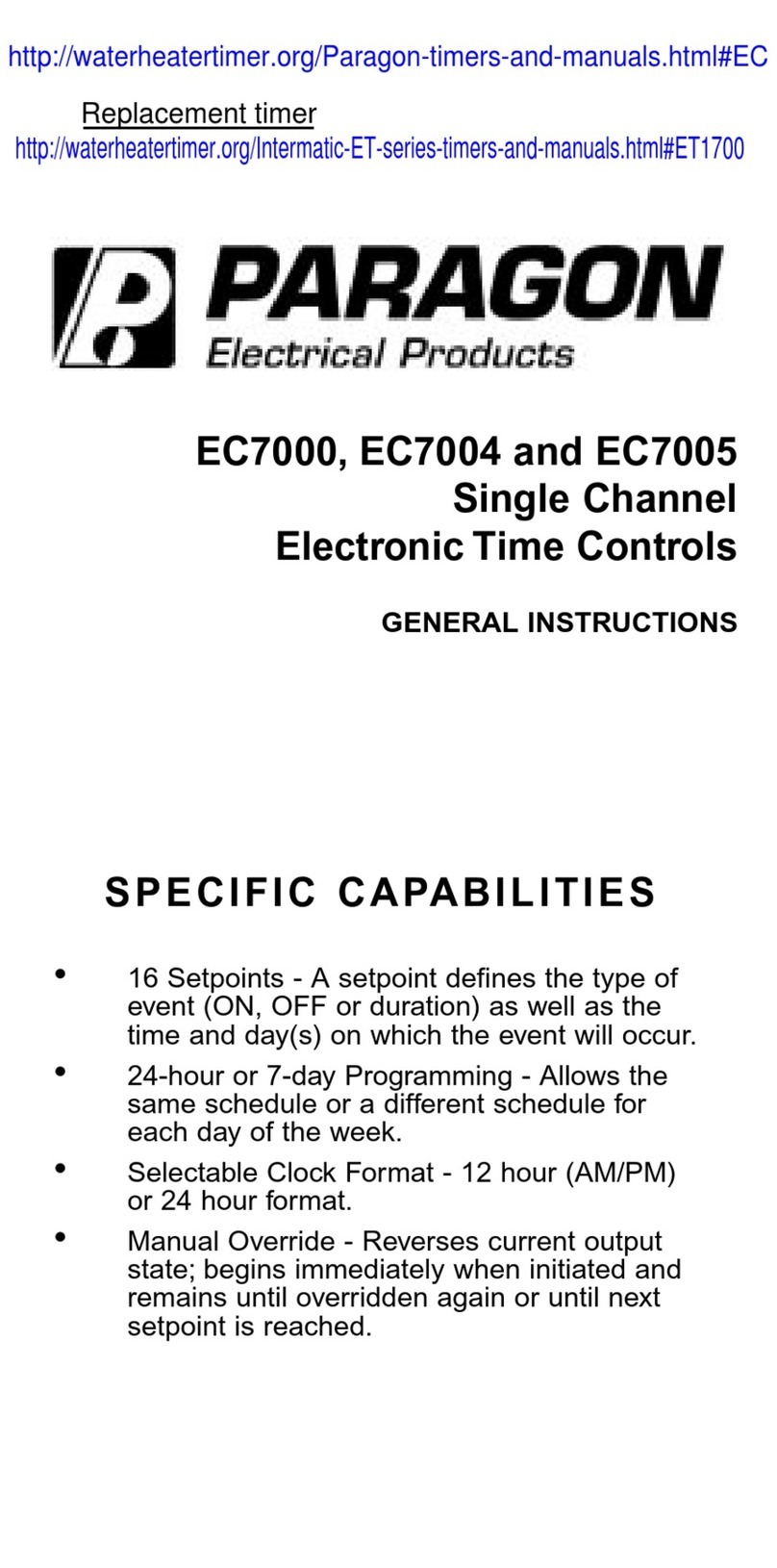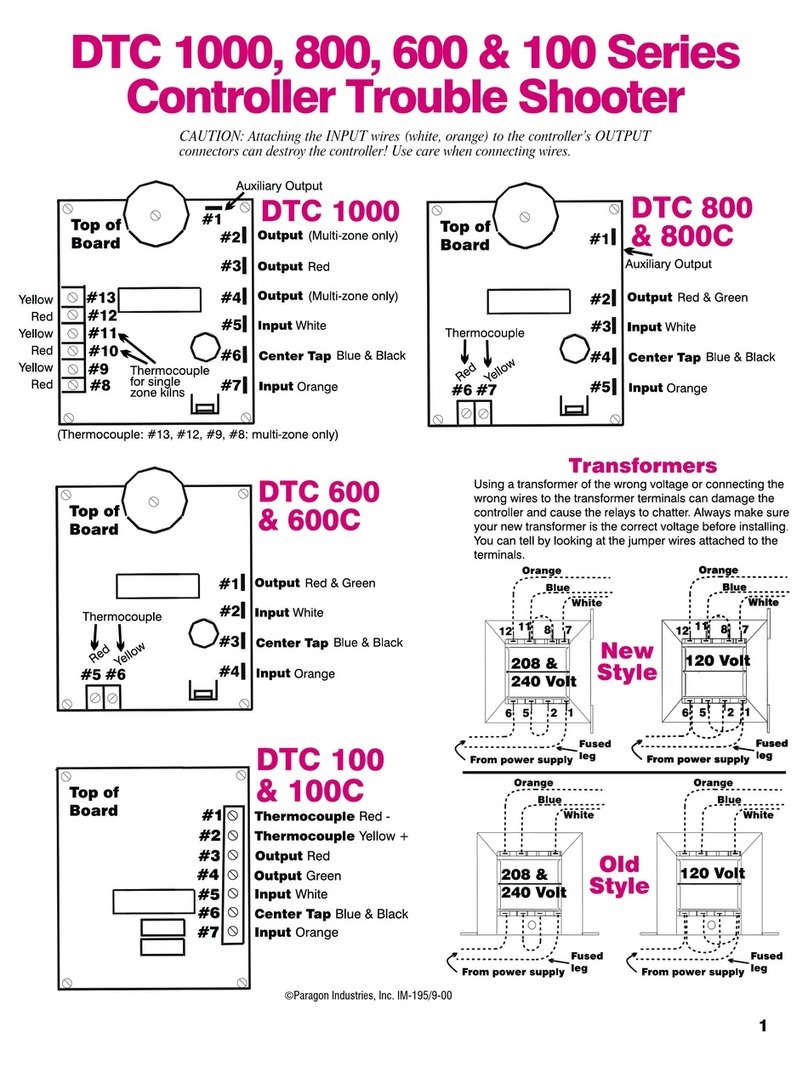
How to Tell if You Have Cone-Fire
1From IdLE display, press ENTER, then 1.If ConE
appears, you have Cone-Fire mode. If ---- appears,
you have Ramp-Hold mode only.
2Bring the controller back to IdLE display:
a) From ---- , press STOP.IdLE will appear.
b) From ConE , press ENTER 3 times slowly. CPL ,
then IdLE , will appear.
If you have Cone-Fire, all of this manual applies to your
controller. If you have Ramp-Hold only, skip Cone-Fire on
pages 6-9.
Care of the Thermocouple
The small metal rod protruding into the firing chamber is
the temperature sensor, or thermocouple. Do not let shelves,
posts or ware touch the thermocouple. This could affect the
temperature reading.
Bumping the thermocouple during loading can damage it
orpushitoutofthefiringchamber.Itshouldprotrudeintothe
firing chamber at least 12"-58". (Do not be concerned if your
thermocouple extends into the firing chamber even farther.)
Avoid firing clay with a high sulphur content. The sulphur
eatsintothethermocouple,makingitbrittleandeasytobreak.
Display Dots
Single Center Dot: Time
Alowercenterdotappearsduringtimedisplay.Itseparates
hoursfromminutes(i.e.1hour,30minutesdisplaysas01.30).
During temperature display, the dot disappears.
Single Right-Hand Dot: °C
When a temperature is displayed in °C, a lighted dot ap-
pears in the lower right. In °F it disappears.
Three Dot Display: Power Monitoring
To adjust temperature, the DTC 1000 sends power to the
relay(s) intermittently. The relays, in turn, power the heating
elements. To monitor when the relays are turned on, press 8
during firing. When three dots appear along the bottom dis-
play, relays are receiving power.
ToturnoffPowerMonitoring,press8again.Thisfeatureis
used mostly for diagnostics.
Correcting Entries
If you enter the wrong temperature, cone, time, etc., while
programming, enter 0000. Then enter the correct numbers
before pressing ENTER.
The Stop Key
You can stop a firing at any time by pressing STOP.
IfyouinadvertentlyenterRamp-Hold,youdonothavetogo
through all the prompts to get back out. Press STOP when
USEr appears. That will take you back to IdLE .
If you inadvertently enter Cone-Fire, STOP will NOT take
youbackto IdLE .PressENTERaftereachCone-Fireprompt
until CPL , then IdLE , appears.
If you inadvertently press OPTIONS, you can get back to
IdLE by pressing STOP.
Cool-Down Temperature Display
When the firing is finished, CPLt will display alternating
with the total firing time in hours and minutes. To view the
current kiln temperature as the kiln cools, press ENTER.
CPLt will disappear. Then temperature will display.
Repeat Firings
To repeat the last firing, press ENTER twice from IdLE .
The kiln will begin firing. This works in both Cone-Fire and
Ramp-Hold.Butfirst,makesureyouarerepeatingthecorrect
firing by using “Program Review” below.
Program Review
When you select a firing program in Cone-Fire or
Ramp-Hold and go back to IdLE , you have called a program
fromstorage.Itisthenreadytofire.“ProgramReview”shows
you the values for that program.
TostartProgramReviewfrom IdLE ,pressENTER,then6.
Valuesfortheprogramselectedforfiringwilldisplayoneafter
theother.YoucanalsouseProgramReviewduringfiringsim-
ply by pressing 6.
TIP:InProgramReview,values for a program display
about one per second. You can speed up this display by
pressing 1repeatedly. If you hold down the 1key, values
will speed by. This works from both IdLE and during
firing.
Pyrometric Witness Cones in
Ceramic Firings
Though the DTC 1000 fires
electronically,everyceramicfir-
ing should include shelf, or wit-
ness,cones.Theymeasureheat
work accurately and give a his-
tory of the firing.
If you fire the same size load
and type of ware regularly, the
shelf cones let you compare one
firing to the next and alert you
when something is wrong. For
example,ifthe shelfconebends
farther and farther with each
consecutive firing, this may in-
dicate thermocouple tempera-
ture drift.
Keep cones 3" from the
peepholetoavoidcoolairdrafts.
Wearfiringsafetyglasseswhenviewingtheconesathightem-
perature. Your dealer can tell you which cone number to use
for each clay and glaze.
5

